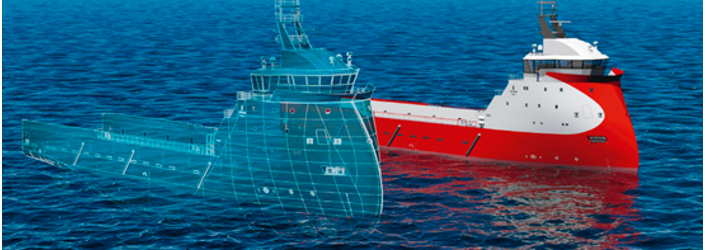
I just returned from my 6th attendance at COMPIT (Conference on Computer Applications and Information Technology in the Maritime Industries). If you are not familiar with COMPIT you can visit the COMPIT site and you can refer to my previous blog posts COMPIT 2015 and COMPIT 2014 Post-Mortem.
I have to say that this year the topics and discussions were totally different than previous years as well as other Shipbuilding related conferences I attend. The amount of papers and discussions related to “disruptive” technologies such as IoT, Machine Learning, Cloud Computing, Augmented Realty, Reality Capture and many more was refreshing. This is a significant move forward for the shipbuilding industry to start catching up in technology to other industries.
There were definitely several themes to the conference but I will focus my three next blog posts on the three that have stolen most of my brain cycles:)
As-Built Model
I definitely heard the phrase, “By using the As-Built model we can..” a lot this conference. I think on the first day I heard it three times. The reason that I found this interesting is that currently the As-Built model is like a unicorn in our industry. Well not really, if we really wanted to we could generate As-Builts today; however, we choose not to build one. I do understand the difficulties with creating and maintaining an As-Built model; however, I also know the benefits of having one.
I do believe that the shipbuilding industry as well as all industries will eventually only produce As-Built models but the real question is by when? 5 years? 10 years? 20 years? 30+ years?
At COMPIT there were several presentations which required an As-Built model:
- Potential Benefits of Augmented Reality in the Smart ship
- Virtual Reality Based Training Improves Mustering Performance
- Recording As-Built via an Open and Lightweight Solution Supplemented by a Process Evaluation Model
- Augmented Reality Assistance for Outfitting Works in Shipbuilding
- Maritime Asset Visualisation
- Digital Twins for Design, Testing and Verification Throughout a Vessel’s Life Cycle
- (Possibly more which I did not attend)
With all the presentations that had As-Built models at the foundation of their thesis, I started to wonder what would drive us over the edge to finally appreciate the value of creating and maintaining an As-Built?
- Will it be clients requesting an accurate digital model to reduce the cost of operations and maintenance?
- Will it be shipyards that want to better track the assets they create so that when they need to create the same or similar one in the future the cost will be lower?
- Will there be a new disruptive business unit that will handle the lifecycle maintenance, operations and management of the ship?
- Will it be to help the communication between engineering, planning and manufacturing?
- Will it be new rules that will require a digital twin for insurance purposes and/or to improve the outcome of personnel and assets after a disaster such as a collision or fire?
- Will it be to leverage new technologies as augmented reality on the shop floor?
- Will it be the benefits of the Digital Twin which requires an As-Built model?
It most likely will not be any one of these but a combination of some of the ones I listed and others I have not. To attain any of the benefits mentioned in these presentations we will need an As-Built and therefore we will need to really understand what is required for an As-Built.
This fundamental requirement made me start to think of what is really required for an As-Built. I know ideally what it would be but what does it need to be to attain at least some of the benefits we long for? Does it need to be every single nut and bolt? Does it need to include welding information? Does it need to include the fine details of our model? Does it need to be CAD? And many more questions.
Then I started to think of the digital twin (digital ship) and its requirement for a computerized version of the physical ship. What information would it need?
Closing Remarks
Having an As-Built model of our physical ship is the holy grail during the entire lifecycle of the ship. The opportunities that will be available when this happens is enormous; however, we may be long way from having this to be the norm in our industry. The papers at COMPIT provide some of the benefits which can be realized with an as built model or at least a subset.
I am convinced that the way I was thinking of As-Builts is all wrong especially with some new technologies available to us today. One of the questions I am asking myself is
“To have an As-Built do you really need all/most of the parts to be represented in a CAD environment?”
The answer to this question can make As-Builts much more attainable in the near future especially with some of the technology that is becoming mature now.

Post Comments
This is an interesting question to think about. Just to share a few thoughts I had after reading the post, I’d imagine as-built models could use some simplification and different level of detail for different compartments – all are dependent on the use case for the as-built model. An as-built model can be a substitute for 2D drawings with ship plans.
@ilyachudakov:disqus Thanks for the comment.
The as-built model would be a great substitute for the tower of 2D drawings printed (or digitally in PDF form) when a ship is delivered. The 3D model would be a bit more out-of-date than the 2D drawings but the question is really how much. Thanks again for your comment.